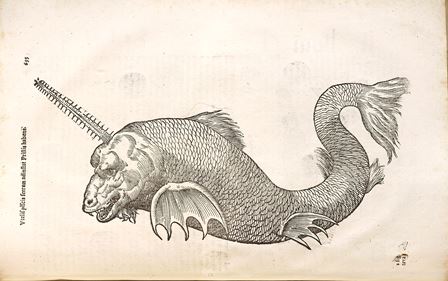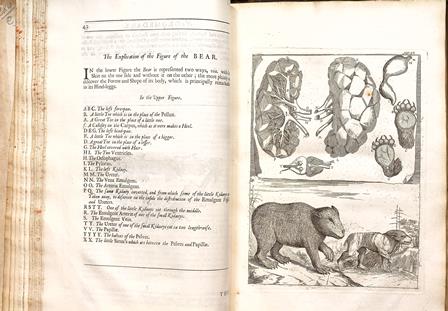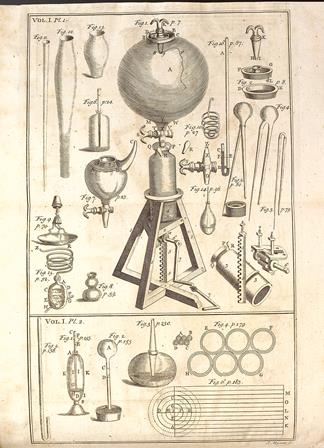I apologize for the lack of updates during the past weeks. Following the scanning of my works, I proceeded to review all the images, conducting extra research on the authors and popular research surrounding the publication of the works. This took much longer than I had anticipated, especially as I had to translate many of the text describing the images. But let me not bore you with only a summary of the work I have been doing. I’m really excited at this point, not only because I feel accomplished enough to blog about it, but also because I am taking some of the final steps towards a completed project. Allow me to share some of the more interesting pages I have the privilege to include in my final exhibit.
An illustration from De Piscibus Libri by Ulysses Aldrovandi.
Being in Latin, as well as having its pictures scattered throughout the work, there was no sure way I could determine the exact context of this image. Within this particular book, there are several surprising and bizarre creatures presented. This one, which appears to be a fish with some sort of bony horn, its label being roughly translated to “utel fish with steel-toed pistis.” The early modern era was one of transition, from theorizing about myths to observing facts. Works like this serve to support this idea.
Pages from Memoirs for a Natural History of Animals, put together by the Academie de Sciences in France
This book was more or less a collection of dissection notes from the French scientific authorities at the time (it was published in 1688). Here we see a pairing of text with explanatory illustrations. The two creatures in the bottom image are both bears, but one has no fur, as to show the muscular and skeletal structure beneath.
A plate at the start of a fourth section in Conrad Gessner’s The Practise of New and Old Physicke.
The title of this book is particularly deceiving, as it actually pertained to several types of distillations. This fourth book supposedly covers “many singular secret remedies.” Distillation was connected to alchemy and medicine, or any practice where something new needed to be made out of ordinary elements. With a dragon-like creature and a magical-looking tree, this section seems to relate to the more mysterious aspects of the practice of distillation.
A plate from Robert Boyle’s collection The Works of the Honourable Robert Boyle
This is a set of etchings, showing Boyle’s famous air pump as well as other scientific apparatuses. Throughout these works, I found many labeled charts and images that more often than not never related to any particular text. I can only assume that in works like this one, which was a collection of Boyle’s essays and experiments, plates were inserted after being pulled from other books.
As I continue to work on the online exhibit (tasks which currently involve lots of cataloging and uploading of images) I will provide more of these “sneak peaks” to the contents of the collection. There has been too much computer work for my liking, but overall I am enjoying my work as a CCEPS fellow very much. And learning some of the ins and outs of information science has been very enlightening!





